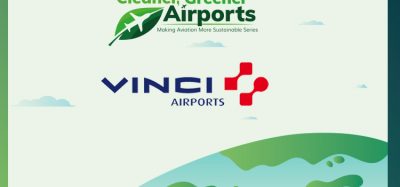Sea-Tac Airport unveils electrification project to save airlines millions in fuel and dramatically reduce greenhouse gas emissions
Posted: 20 March 2014 | Seattle-Tacoma International Airport | No comments yet
Alaska Airlines leads the project with more than 200 New Electric Vehicles…


Airplanes get most of the attention at an airport, but a new project to convert the rest of the vehicles on the airfield from fossil fuels to electric power is about to save millions of dollars and tons of greenhouse gases at Seattle-Tacoma International Airport.
The Port of Seattle, along with Alaska Airlines, Western Washington Clean Cities and U.S. Representative Adam Smith today unveiled a new project providing nearly 600 electric charging stations throughout the airport for ground support equipment (GSE) such as baggage tugs, bag ramps and pushback vehicles. Converting the GSE from fossil fuel to electric, each year the project is projected to save $2.8 million in airline fuel costs and 10,000 tons of greenhouse gas emissions – the equivalent of taking 1,900 cars off the road.
“The eGSE project here at SeaTac should serve as an example of how energy efficiency is not only good for the environment, but is also a smart financial investment,” said U.S. Congressman Adam Smith. “We must continue to invest in alternative energy technologies that protect consumers, reduce greenhouse gas emissions, and strike a balance between moving away from our dependence on fossil fuels while mitigating the economic impact of that transition.”
Join us live: Shaping the Next Generation of Hold Baggage and Air Cargo Screening
Join us live for an insightful webinar on 11th December at 14:00 GMT, in collaboration with Smiths Detection, as we explore the strategic balance of operational efficiency, regulatory compliance, and sustainability in high-volume security environments.
This session offers a focused look into future-proofing your security strategy.
Key learning points
- Cost Reduction: Strategies to minimize bag travel time while simultaneously reducing operational costs.
- Regulatory Roadmap: Insights into the next wave of regulatory changes and their impact on future investment decisions.
- Sustainable Systems: Practical approaches to building sustainability into security systems and lowering the total cost of ownership (TCO).
- Scalable Solutions: Real-world examples of scalable systems supporting current airport growth and preparing for tomorrow.
Register now for expert insights, case studies, and actionable strategies on operational efficiency!
The port has installed bright yellow charging corrals with smart, fast-charging plug-ins for vehicles to receive a full charge in less than 4 hours. The smart technology determines which vehicle needs the most charge and meters out the power. This first phase provides 296 charging locations throughout concourse D, C, and the north satellite. The second phase will cover the rest of the terminal at concourse A, B, and the south satellite for a total of 576 charging locations by September.
“This project provides the infrastructure for airlines to convert their vehicles from diesel to electric in Sea-Tac’s effort to become the first major airport in the U.S. to provide charging stations at all gates,” said Courtney Gregoire, Co-President, Port of Seattle Commission. “As many as 650 vehicles could eventually be covered by electric technology and make a huge difference in the airport’s carbon footprint.”
Alaska Airlines has taken the lead in this green opportunity with 204 electric vehicles (146 with Alaska, 58 with Horizon) in operation on the ground at Sea-Tac. The environmental benefits are substantial. Alaska’s conversion to electric vehicles is the equivalent of taking 360 passenger vehicles off the road for a year, or a reduction in carbon dioxide emissions of 1,000 tons a year.
“Switching from fossil fuels to electric-powered equipment not only benefits the environment by reducing carbon emissions and fuel use, but the transition is expected to save Alaska Air Group about $300,000 a year in fuel costs,” said Jeff Butler, Alaska Airlines’ vice president of the airport operations and customer service. “These sustainability efforts help us keep our costs down in order to provide better value for our customers.”
The $31 million project is funded in large part through federal grants. The U.S. Department of Energy provided $5 million through a grant with the Western Washington Clean Cities Coalition. An additional $3.5 million came from a Federal Aviation Administration grant. Part of the grant money is being used to help airlines fund the purchase of new electric vehicles. Additional airlines are scheduled to join the program later this year.
“This project had a lot of moving parts,” said Stephanie Meyn, Program Manager for Western Washington Clean Cities. “We applaud the Port of Seattle and Alaska Airlines for their leadership, commitment and creative collaboration. They’ve helped create a successful model for other airports to achieve cleaner air, reduced reliance on petroleum, and a healthier community.”
Join our free webinar: Beyond silos: How ecosystem thinking elevates the airport experience
In today’s complex aviation landscape, airports are moving beyond siloed operations to embrace a new era of collaboration. This webinar focuses on how leading airports are using ecosystem thinking to adapt, personalize, and continuously improve every touchpoint, boosting both passenger satisfaction and non-aeronautical revenue.
Date: 13 Nov | Time: 10:00 GMT
REGISTER NOW TO SECURE YOUR SPOT
Can’t attend live? No worries – register to receive the recording post-event.

















